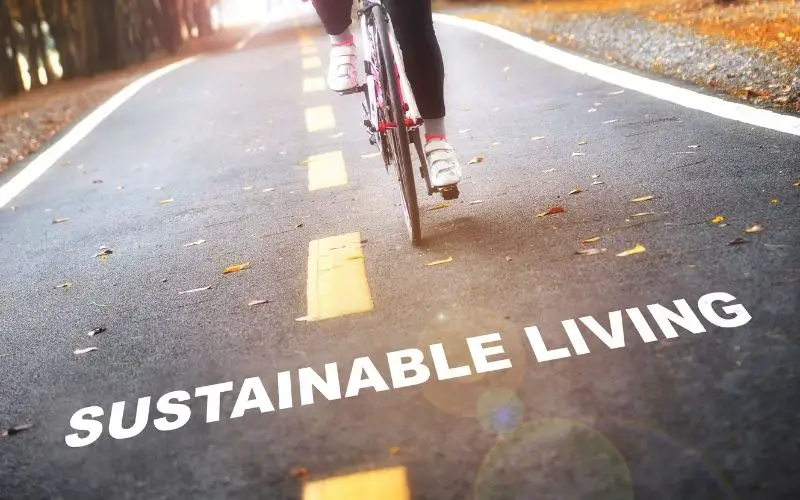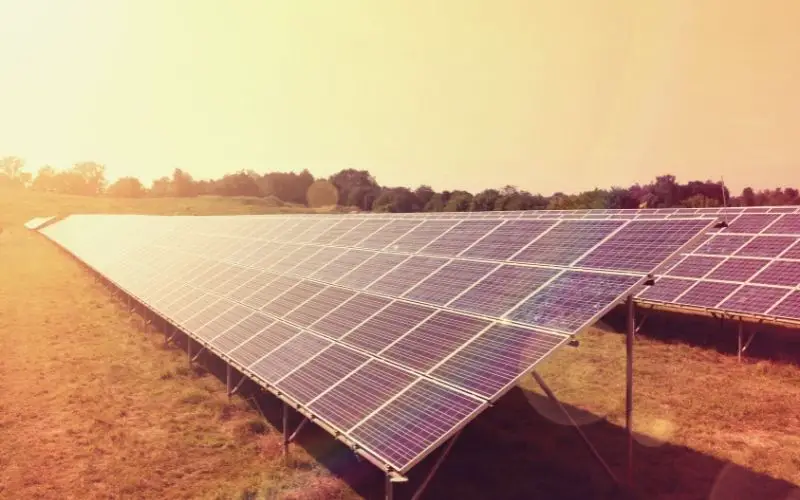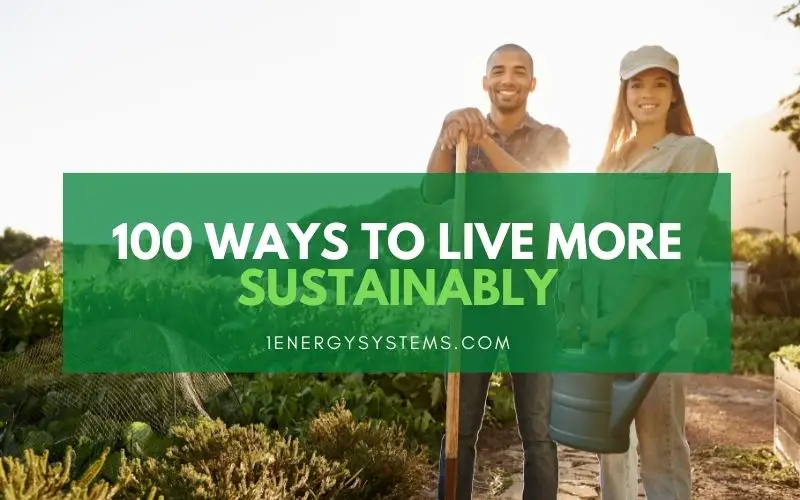One of the terms used frequently by environment lovers is “sustainable living”. You may have come across this multiple times in various contexts. Are you aware of its true meaning?
The dictionary defines the word “sustainable” as “being able to be maintained at a certain rate or level” and “conserving an ecological balance by avoiding depletion of natural resources”. The questions that need to be answered here are “What qualifies for sustainable living?” and “How to live sustainably?”.
Read on to learn more about sustainable ways of living and why it is vital for our very survival.
What does it mean to be sustainable?
Sustainable living involves satisfying our needs without depleting the natural resources and compromising the ability of future generations to satisfy their needs. In our endeavor to live sustainably, conservation of natural resources is only one part of it, albeit a major one.
The term sustainable living comprises a holistic approach towards balancing various aspects of living without causing a dent in the availability of resources to our fellow human beings as well as for future generations. These resources include economic and social ones besides the natural resources already mentioned.
This article deals with the part played by natural resources in sustainable living.
Why is sustainable living important for the planet?
To live you need to use up natural resources directly or indirectly. Some examples of direct consumption are water, fruits, vegetables, and livestock. However, this is not all. The bulk of our use of natural resources comes from indirect use.
Natural resources or the things that nature has provided for us to make our lives comfortable are made usable after various processes. Such as petroleum products from crude oil, wood from trees, salt from the ocean, and numerous metals and minerals used in making things for our everyday use.
Humans have been using up natural resources all these years. Unfortunately for us, the supply of most natural resources is limited. This means the things we use are not replaced or replenished. Moreover, uncontrolled use of natural resources is leading us down the self-destructive path of greenhouse gas emissions, global warming, and climate change.
Until the mid-20th century, we were not fully aware of this simple truth. As the population grew and the standard of living rose up, demand for natural resources went through the roof. As the sad and shocking realization set in, the scramble for a solution began. This has led us to sustainable living ideas.
Sustainable living involves living a comfortable life without harming the environment and preserving the bounties of nature for future generations. It is all about leaving the world in a better place than you found it.

How to live a sustainable life?
Sustainable living refers to the practice of making conscious and deliberate decisions and adjustments to take less from the Earth than we give back, ensuring that we leave a lighter carbon footprint on our planet now and for future generations.
Living sustainably can be as simple as planting a garden or composting scraps instead of sending them to the landfill. It can also mean installing solar panels or collecting rainwater so you can reuse it. Many sustainable practices involve lifestyle changes such as buying organically grown produce, avoiding excessive waste products, walking or riding bikes more often, and purchasing energy-efficient appliances and equipment — just to name a few examples.
The idea is for each person to find out what works best for him or her and their family based on what is affordable and possible in his or her individual capacity.
Each and every step you take towards sustainability makes a difference. Here are 100 simple ways to get started!
Sustainability in lifestyle
- Spend less time indoors and more time outside.
- Grow a garden. If this is too much, grow your own herbs.
- Use organic manure. This will help you to grow produce without polluting land and water.
- Plant a few trees in your backyard. Not only can they give you shade and fruits, but trees also use up carbon dioxide and replenish oxygen in the atmosphere.
- Turn vegan. Besides its health benefits, it can bring down the need for rearing animals for human consumption.
- Go organic. Produce grown organically will have fewer chemicals in the form of pesticides and artificial fertilizers.
- Eat unprocessed foods. Whole foods are richer in nutrients and antioxidants. Moreover, processing needs energy.
- Join a food cooperative. This will give you a say in the kind of foods sold in their stores.
- Buy local. Not only will the produce be fresh and unspoiled, buying locally can reduce their carbon footprint during transportation.
- Go paperless. One average pine tree equates to 10,000 sheets of paper. Every time you avoid the use of paper, you are helping in saving trees.
- Read news online instead of subscribing to newspapers.
- Borrow books instead of buying. Each new book means more trees cut down for making paper.
- Eat home-cooked meals and make your own coffee/tea instead of takeaways.
- Carry your own food to the office and school. Not only is home-cooked food more hygienic and nutritious, but you can also avoid unhealthy food from outside.
- Use reusable bottles and boxes instead of single-use ones. Plastic bottles are believed to take 450 years to decompose in a landfill.
- Carry your own handkerchief instead of using disposable tissues. Tissues are paper and made by cutting down trees.
- Stop using disposable cutlery and napkins. Single-use plastic cutlery takes years to decompose, while trees are felled for making paper napkins.
- Adopt a pet from a shelter instead of buying from a breeder. This can reduce the number of animals euthanized considerably.
- Donate to charity instead of gifting. Instead of giving unwanted or unnecessary gifts, charity donations can help bring a smile to an out-of-luck human being.
- Spread sustainable living ideas among your family and friends. Inspire others by your example.

Sustainability at home
- Dress warmer during winter months to keep the thermostat lower. Or dress lighter in summer to keep the temperature of the air conditioner higher.
- Open the blinds to let in natural light instead of switching on light bulbs.
- Use LED bulbs instead of incandescent ones. LEDs consume only a fraction of energy.
- Turn off the lights when you leave the room. And, use just enough lights to light up the rooms.
- Turn off devices that are not in use. Or else, they will continue to consume energy.
- Use a shower timer or manually limit your shower time. You can avoid wastage of water with this.
- Hand wash your clothes if there are only a few. Running a washing machine cycle uses up lots of water and electricity.
- Wait for a full load before running a washing cycle. Minimize the number of washing cycles to avoid wastage.
- Use a clothesline instead of a power dryer. The dryer uses large amounts of power. This can be avoided by drying clothes in the sun which comes free.
- Install water-saving faucets and showerheads. Often, we allow water to run and this leads to wastage. Water-saving devices mix air to add volume to the flow.
- Compost your biodegradable waste. You can use it as an organic fertilizer for your garden or potted indoor plants.
- Choose recycled toilet paper. Use fewer paper products to save trees.
- Use old newspapers or scrap papers to collect pet poo. Avoid using fresh paper towels for this purpose.
- Avoid using bin liners and use newspapers instead. Bin liners are polythene and are not biodegradable.
- Repurpose jars and containers. Throwing them away after single use will help them end up in landfills.
- Use cloth napkins instead of paper towels. Avoid using paper as much as possible.
- Lower the temperature of hot water for washing and bathing. You can save energy and thereby usage of fossil fuels to generate electricity.
- Cook only what you need and serve only what you want. Avoid food waste.
- Use a pressure cooker to reduce cooking time.
- Don’t leave the water running when brushing teeth, washing your face, or shaving.
Sustainability while shopping
- Carry your own shopping bags. Avoid using single-use plastic bags.
- Take your own paper bags or containers to avoid plastic and polythene packaging.
- Buy in bulk to save on packaging.
- Buy from wholesale shops. They sell things without plastic packaging.
- Buy directly from farmers or farmer’s markets. This can help save energy for transportation.
- Choose not to buy products in polythene packaging or plastic containers.
- Avoid buying bottled water. Plastic bottles take a long time to decompose in landfills.
- Carry your bread box when buying bread from a bakery. Avoid plastic packaging.
- Bring your own containers when shopping at a deli.
- If packaged products cannot be avoided, choose ones with recycled packaging.

Sustainability in fashion
- Use your clothes as much as possible. If they end up in landfills, you are wasting precious natural resources.
- Donate the clothes that you no longer want to charity or second-hand shops. Buy clothes from thrift stores.
- Buy from clothing outlets that provide alteration and repair services. This can help you use them longer.
- Try to alter old clothes into new ones instead of throwing them away.
- Adopt a minimalist lifestyle. Learn to manage with fewer items and simpler living.
- Choose good quality clothes that last longer. The more you use the clothes you buy, the less damage you cause to the environment.
- Buy brands that support environmental causes. Choose products made using sustainable production methods.
- Choose sustainable materials over ones that harm the environment. Or else you are aiding in depleting the natural resources further.
- Wash clothes less frequently. Saves on water and energy spent for washing.
- Use old clothes for other purposes. Throwing them away can help them end up in landfills.
Sustainability in beauty
- Choose to go makeup-free once a week. Makeup ingredients are harmful to the environment.
- Make your own face scrub and cleanser. Going natural instead of chemical-based ones can help the environment.
- Use reusable pads to remove makeup. Reduce waste.
- Consider shampoo bars to save on packaging. Plastic or polythene packaging takes hundreds of years to decompose.
- Avoid beauty products with ingredients that are harmful to the environment.
- Minimize the use of store-bought beauty products. They contain toxic chemicals that can pollute land and water sources.
- Buy bigger containers and packaging to reduce plastic usage.
- Prefer natural scrubbers to artificial ones. Natural ones are biodegradable.
- Donate unwanted beauty products to local women’s shelters or organizations like Project Beauty Share or Beauty Bus.
- Use reusable sanitary pads or menstrual cups. Reduce the use of single-use sanitary napkins.

Sustainability at the office
- Turn off lights and computer when you leave work. Avoid phantom loading and wastage of electricity.
- Use the printer only when absolutely necessary. Save on paper and electricity.
- Print on both sides of the paper whenever possible.
- Collect scrap paper and recycle. Recycling can save natural resources from being wasted.
- Unplug devices at the end of the day instead of keeping them in standby mode to save electricity.
- Choose recycled paper for business cards. Save trees.
- Spruce up your workplace with potted plants. Plants absorb carbon dioxide and provide oxygen for us.
- Use reusable supplies wherever possible. Avoid them going into landfills.
- Use natural light and ventilation to save electricity.
- Encourage and reward employees for eco-friendly practices.
Sustainability in commuting
- Cycle or walk instead of driving. It is healthy and saves gas.
- Use public transport instead of a private vehicle. You can avoid the wastage of fossil fuels.
- Use carpool instead of driving your own car.
- Take stairs instead of elevators. This can help you stay healthy and save on energy.
- If necessary, rent a bike. The bike offers eco-friendly transportation.
- Choose an electric car over one that runs on fossil fuel. They leave a much smaller carbon footprint.
- Live close to your office to avoid a long commute. Save gas and help the environment.
- Try to avoid rush hour traffic to save on gas.
- Club your errands to minimize taking out your car.
- Reduce your flight time and bring down your carbon footprint.

Sustainability in technology
- Go solar fully or partially. This can help avoid the use of fossil fuels for energy generation.
- Choose solar energy chargers for phones. Bring down your dependence on grid energy generated with fossil fuels.
- Opt for rechargeable batteries wherever possible. Reduce the number of discharged batteries that go into the landfill.
- Donate unwanted devices to charity. Someone else may find them useful.
- Dispose of electronic waste responsibility. They contain harmful toxic chemicals and minerals that can pollute water and land sources.
- Repair and reuse your devices instead of buying new ones. Avoid throwing them away.
- Buy second-hand devices if they will serve your needs.
- Choose energy-efficient technology. Less energy usage means less use of fossil fuels.
- Use your electronic devices as long as possible.
- Use cloud storage instead of hard drives and other storage devices.
Bottom line
The more you know about sustainability, the better your decisions will be. And if you’re not sure where to start, these 100 easiest ways to be sustainable offer you the perfect starting point.
You don’t have to live in a tiny house or give up every convenience- just follow these tips and watch how much happier, healthier, wealthier, wiser, more informed… well okay we’ll stop there because at this point it’s getting too long of a list!
But seriously though, you will find at least a few among the sustainability ideas listed here appealing and adaptable.
Recommended Reading:

